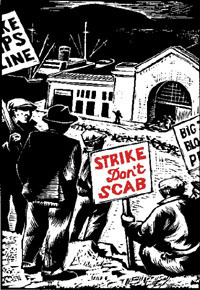|
|
|
|
|
|
Federal officials order DC Metro to fix more than 200 safety issues
Federal officials order DC Metro to fix more than 200 safety issues
https://www.washingtonpost.com/local/trafficandcommuting/federal-officia...
Commuters exit the Federal Center SW Metro station after service was suspended following a non-passenger train derailment Aug. 6. (Amanda Voisard/For the Washington Post)
By Lori Aratani December 15 at 7:52 PM
The Federal Transit Administration on Tuesday ordered Metro to address a list of more than 200 safety issues — some dating back to 2008 — that Metro officials were aware of but may not have resolved, ranging from out-of-date fire extinguishers to derailments and collisions that weren’t made public.
The new safety directive identifies a variety of problems that point to breakdowns in Metro’s procedures. The list also serves to bolster previous reviews that found that many of the transit agency’s workers lack proper training, departments often fail to communicate with one another and Metro doesn’t have a coherent system for ensuring that even the most basic maintenance tasks are completed.
The problems were brought to Metro’s attention by the Tri-State Oversight Committee (TOC), a regional body that previously monitored day-to-day safety at Metro. But because the TOC lacked the authority to force Metro officials to act, some of the concerns languished for years.
[Read the FTA’s safety directive]
Now that the FTA has assumed responsibility for rail safety at Metro, officials at the federal agency say they will push Metro to correct these and other issues it identified in a previous audit of the system.
Play Video2:01Metro's new general manager talks rider concerns with The Post
After less than a week on the job, Metro's new general manager and CEO, Paul J. Wiedefeld, sat down with The Washington Post to discuss safety, fare prices and his plan for system improvements. (Ashleigh Joplin/The Washington Post)
“In many instances, [the Washington Metropolitan Area Transit Authority] has developed, or is in the process of carrying out, corrective action plans that have been approved by the TOC,” said FTA spokesman Nathan Robinson. “However, since many of these findings relate to safety-critical items or activities, the FTA is taking the lead in enforcing WMATA’s implementation of corrective actions.”
Mortimer Downey, the Metro board chairman, said, “These are all things that need to get done, and it is perfectly correct to have FTA follow up on them.”
The 51-page document released Tuesday is an attempt by FTA officials to create a master list of safety concerns at Metro. It is the second safety directive issued by federal authorities; an earlier one outlined how FTA oversight of Metro would work.
[FTA report finds serious safety lapses at Metro]
“Today’s safety directive consolidates the findings from FTA and earlier findings from TOC into a single list that provides helpful clarity and direction,” Metro spokesman Dan Stessel said. “Metro is already working on these corrective actions, and we will continue to work cooperatively with FTA to address each one.”
Metro has 30 days to respond to the directive and 60 days to develop a plan for addressing the problems.
Among the issues: instances in which train, yard and interlocking operators did not follow “critical safety rules,” resulting in at least two train collisions. In another incident, a metal ceiling tile fell onto the trackbed as a train was entering the Smithsonian station. Several of the safety concerns raised in the directive stem from a fatal 2013 incident in which a contract worker was killed and two Metro employees seriously injured after a fire and explosion in a tunnel near Union Station.
The transit agency already is working to address nearly 100 findings from a first-of-its-kind safety assessment released in June by the FTA.
Metro is the first U.S. subway system to be under direct federal supervision for safety. The unprecedented action by Transportation Secretary Anthony Foxx came after a series of calamites, beginning with a fatal smoke incident in January. One person was killed and scores of other passengers were sickened when a Yellow Line train became stuck in a tunnel just outside the L’Enfant Plaza station and filled with smoke. Service interruptions over the next few months only served to reinforce Metro’s image as a troubled system. In August, an investigation into the derailment of an empty Green Line train found that Metro officials had known for a month that a stretch of track was defective but did not fix it.
[One person dies after a Metro train stalls in a smoke-filled tunnel]
Adding to the system’s woes, Metro had been without permanent leadership since January, after Richard Sarles retired. The board was close to hiring a replacement shortly after Sarles’s departure, but disagreements among members forced them to scuttle the search and start from scratch.
Still, riders and regional leaders are hopeful that the system has begun to right itself.
Last month, the board hired Paul J. Wiedefeld, a former head of Baltimore-Washington International Marshall Airport and a former Maryland transit official, to be Metro’s new general manager. And a recent budget proposal for the fiscal year that begins July 1 includes several “rider-friendly” initiatives designed to foster goodwill and win back those who have abandoned the system because of poor and inconsistent service.
[Transportation inspector general to audit FTA’s oversight of Metro]
Even so, Metro and the FTA continue to be under scrutiny. The investigative arm of the Department of Transportation announced last week that it would audit the FTA’s oversight of Metro’s rail system.
That audit will look into whether the FTA has the tools and the personnel to carry out its new role overseeing the safety of Metro’s rail operations.
-

- Log in to post comments
- Printer-friendly version



